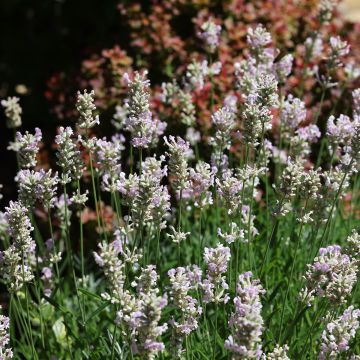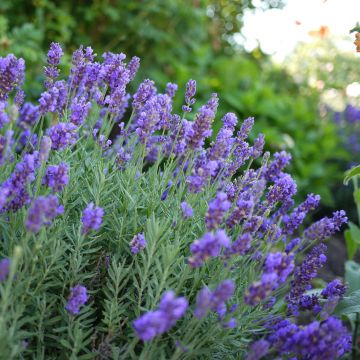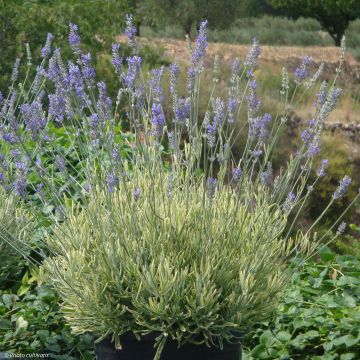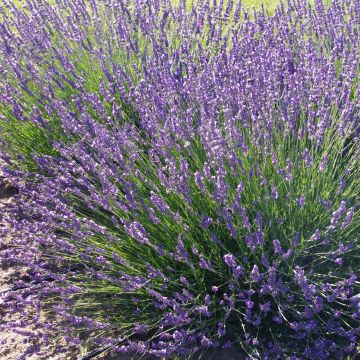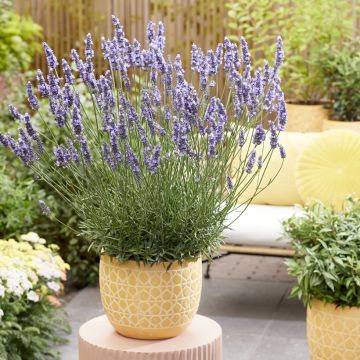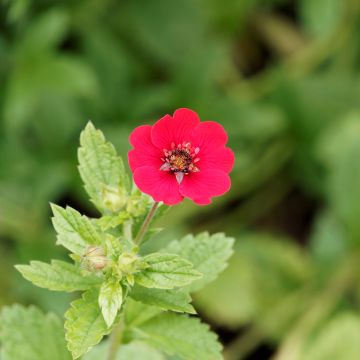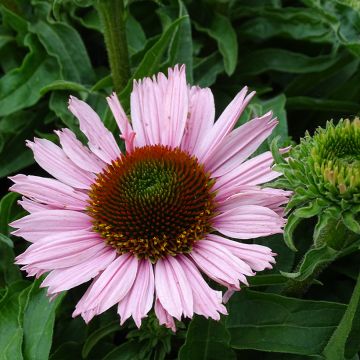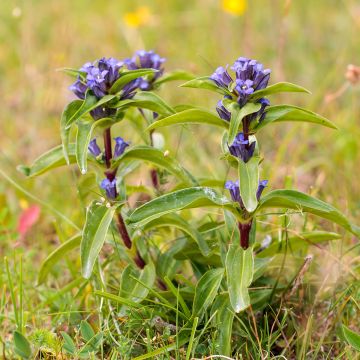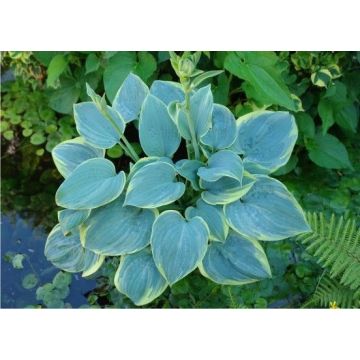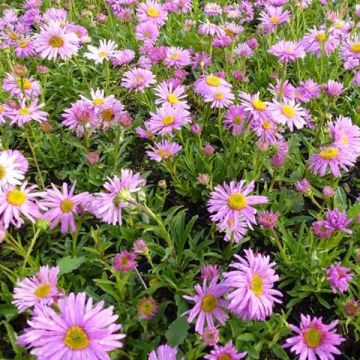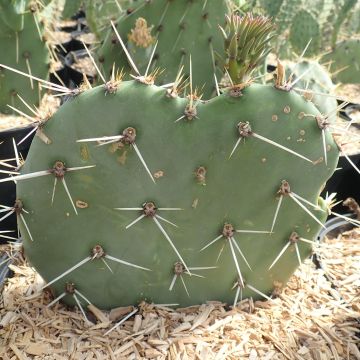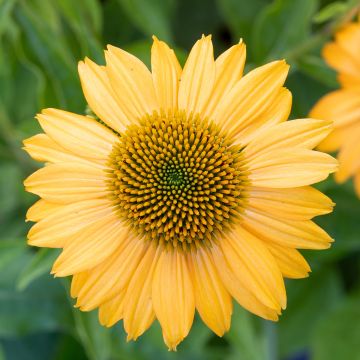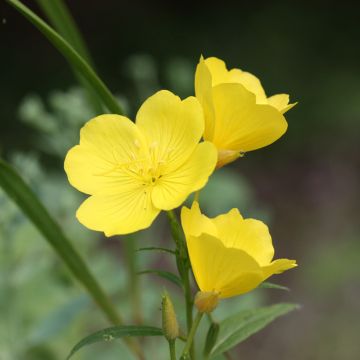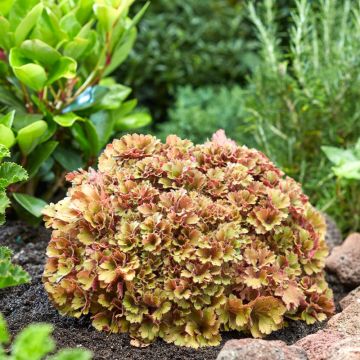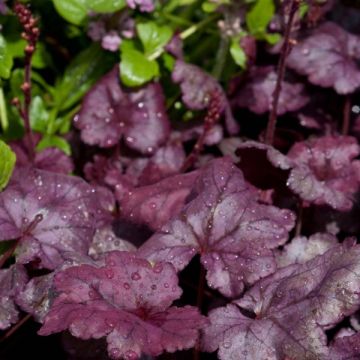Shipping country and language
Your country of residence may be:
Your country of residence is:
For a better user experience on our website, you can select:
Your shipping country:
-
Andorra
-
Austria
-
Belgium
-
Bulgaria
-
Canada
-
Chile
-
Croatia
-
Cyprus
-
Czechia
-
Denmark
-
Estonia
-
Finland
-
France
-
Germany
-
Greece
-
Hungary
-
Iceland
-
Ireland
-
Italy
-
Latvia
-
Lithuania
-
Luxembourg
-
Malta
-
Monaco
-
Netherlands
-
Poland
-
Portugal
-
Romania
-
Slovakia
-
Slovenia
-
Spain
-
Sweden
-
Switzerland
-
United Kingdom
We only deliver seed and bulb products to your country. If you add other products to your basket, they cannot be shipped.
Language:
-
French
-
German
-
Spanish
-
English
-
Italian
My Account
Hello
My wish lists
Log in / Register
Existing customer?
New customer?
Create an account to track your orders, access our customer service and, if you wish, make the most of our upcoming offers.
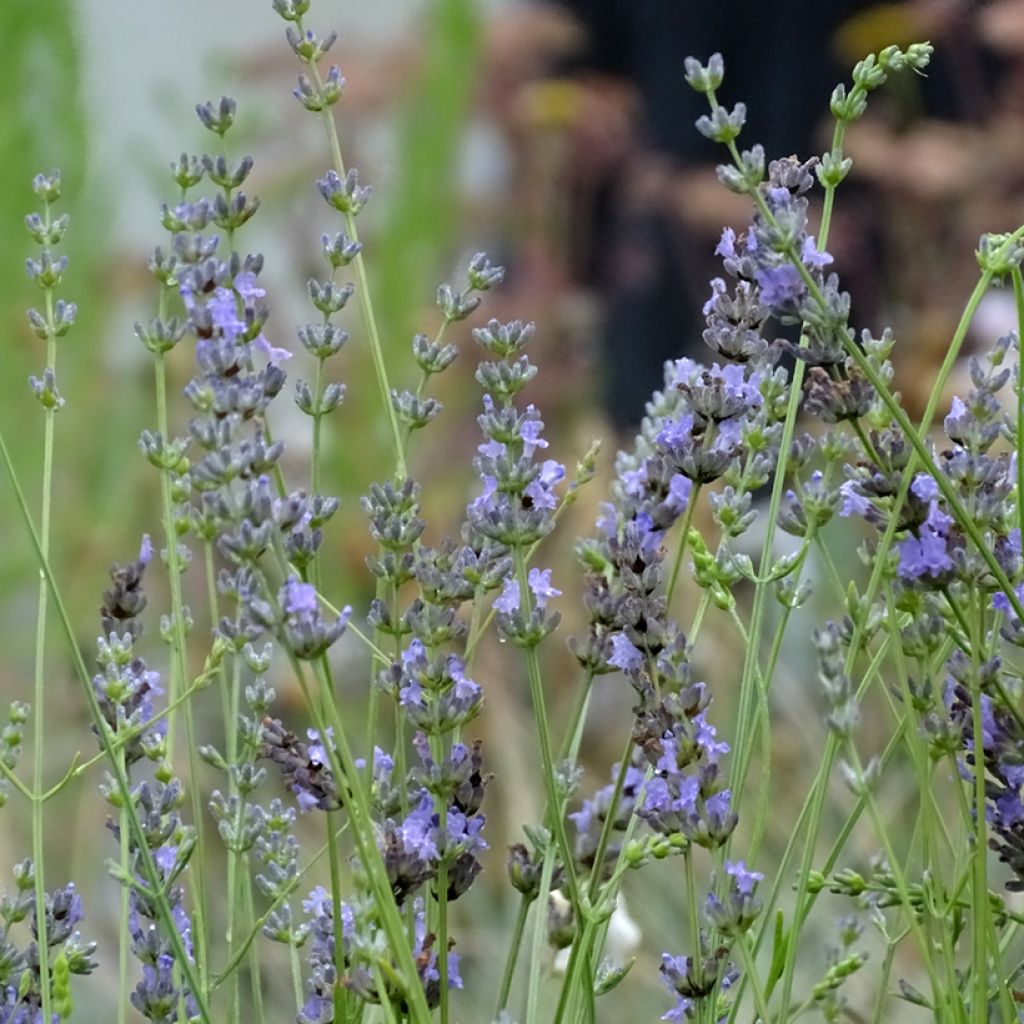

Lavandula intermedia Grappenhall - Lavandin
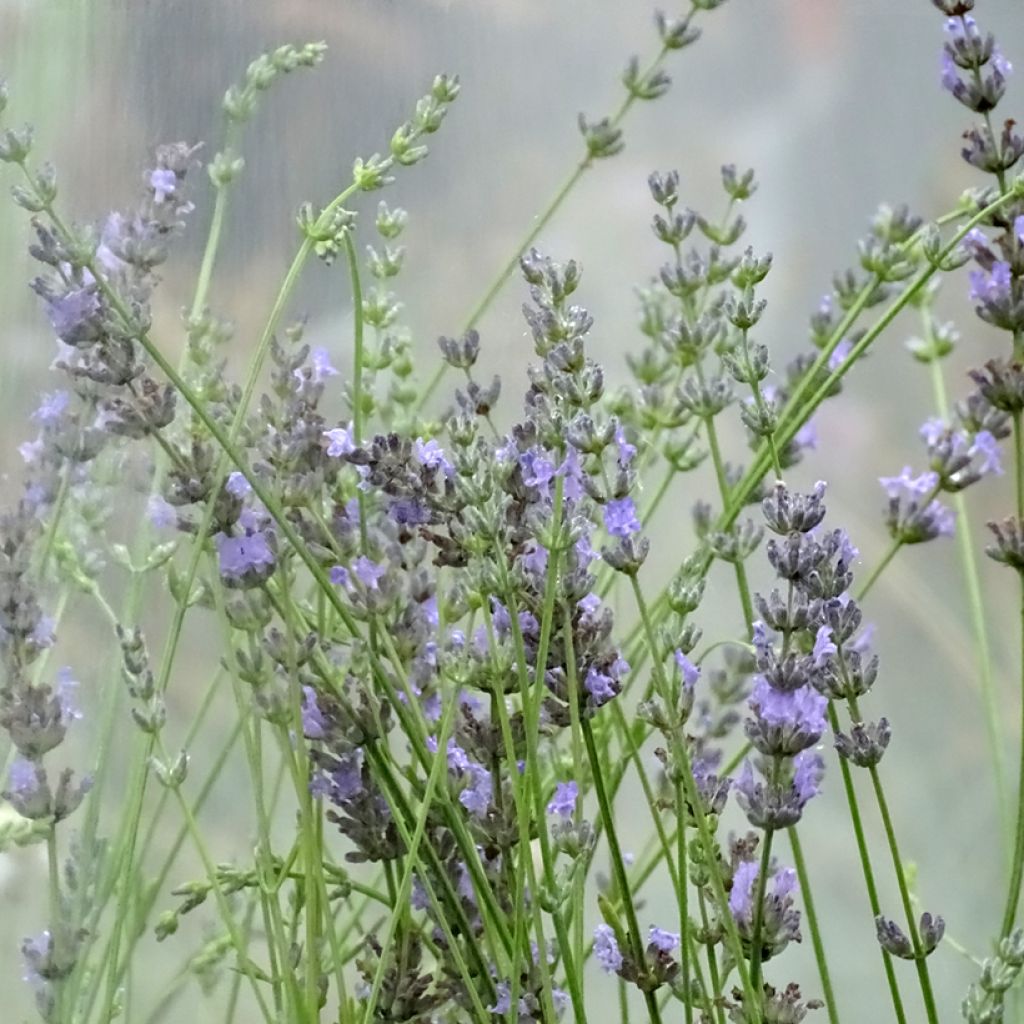

Lavandula intermedia Grappenhall - Lavandin
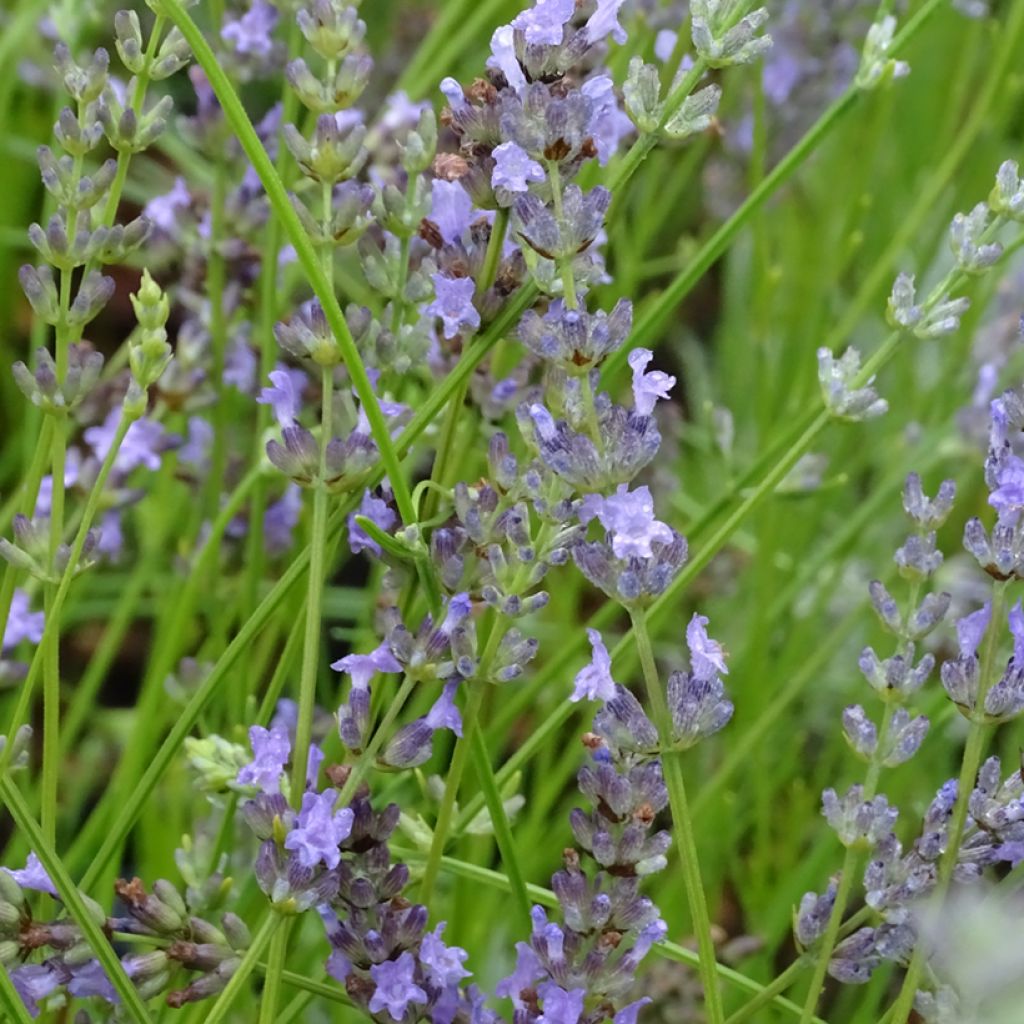

Lavandula intermedia Grappenhall - Lavandin
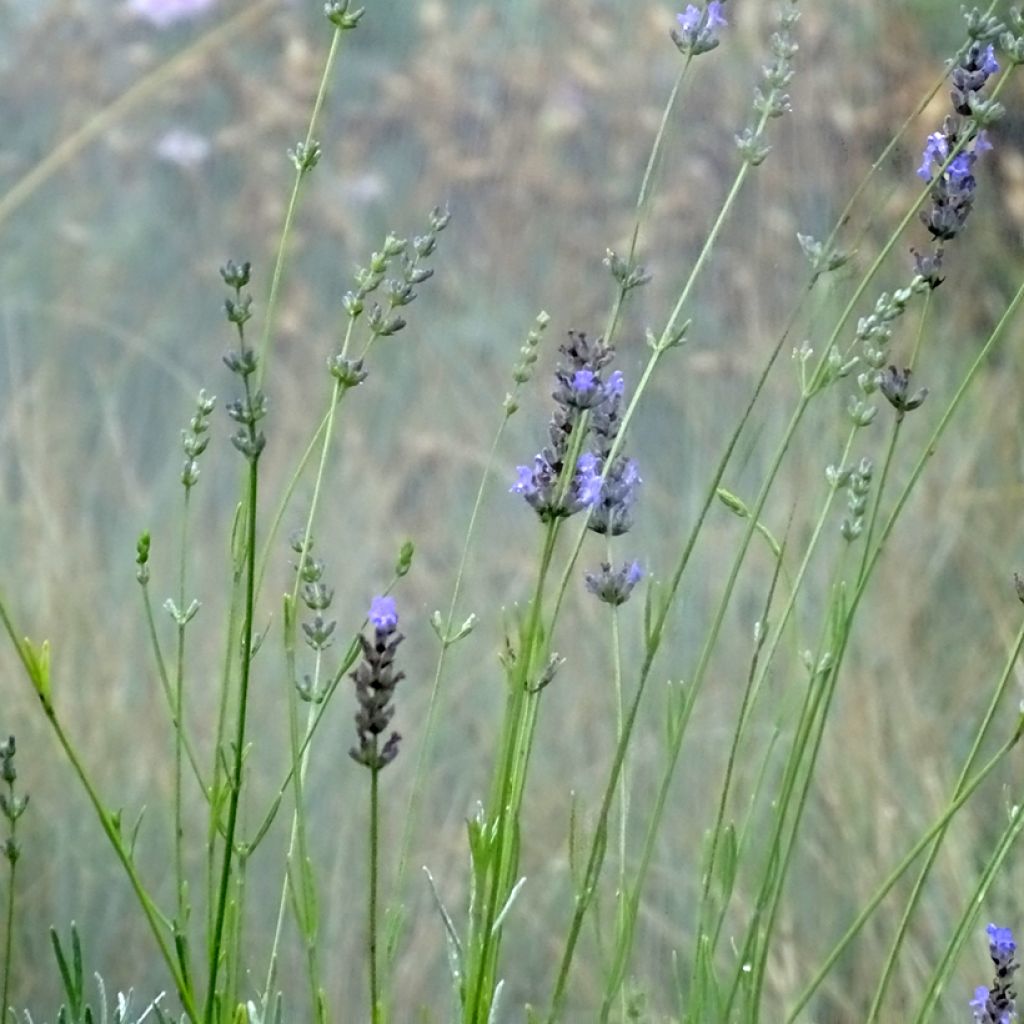

Lavandula intermedia Grappenhall - Lavandin
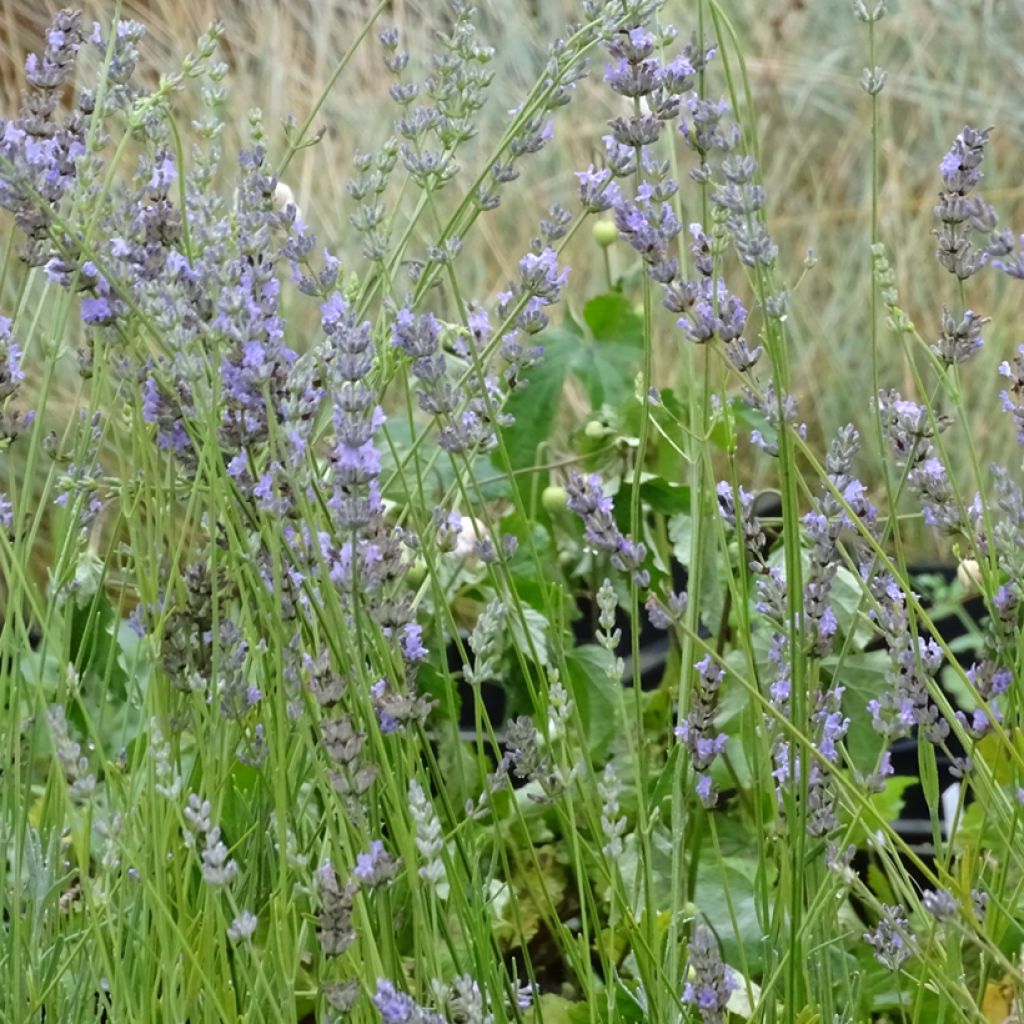

Lavandula intermedia Grappenhall - Lavandin
Lavandula intermedia Grappenhall - Lavandin
Lavandula x intermedia Grappenhall
Lavandin, Dutch Lavender
Hello, The young plants are trying to recover, but they were in a bad condition.
Monique, 01/09/2022
Order in the next for dispatch today!
Dispatch by letter from €3.90.
Delivery charge from €5.90 Oversize package delivery charge from €6.90.
More information
This item is not available in your country.
Schedule delivery date,
and select date in basket
This plant carries a 12 months recovery warranty
More information
We guarantee the quality of our plants for a full growing cycle, and will replace at our expense any plant that fails to recover under normal climatic and planting conditions.
From €5.90 for pickup delivery and €6.90 for home delivery
Express home delivery from €8.90.
From €5.90 for pickup delivery and €6.90 for home delivery
Express home delivery from €8.90.
Does this plant fit my garden?
Set up your Plantfit profile →
Description
Lavandula x intermedia Grappenhall is a compact hybrid variety of lavender that forms a regular and dense ball of wide, grey foliage, which becomes even lighter in colour when the soil is dry. This lovely vegetation, pleasantly fragrant, is adorned in summer with spikes of surprisingly light blue lavender flowers, which are abundant and fragrant. A plant of arid hillsides and sun-drenched slopes, it is perfect for bringing the charm and scents of the Mediterranean scrub vegetation into a garden, even if it is small in size. This variety also allows for the creation of beautiful pots for the patio or balcony.
The Lavandula genus belongs to the Lamiaceae family, just like sage, rosemary, and thyme. This 'Grappenhall' hybrid, sometimes marketed under the name 'Pale Pretender', should not be confused with an English cultivar of the same name, also known as Gigantea, which is much older, dating back to 1902, larger in size, with narrower foliage and darker flowers. Lavandula x intermedia is obtained by cross-breeding L. angustifolia and L. latifolia. These two species are found in the wild in the same mountainous environment and naturally cross-pollinate. They have given rise to numerous cultivars, all easy to grow in the garden, tolerant of limestone and relatively hardy in well-drained soil. Lavandula x intermedia has broader, less silver foliage and is less aromatic than "true" lavender (Lavandula angustifolia).
The 'Grappenhall' hybrid forms a large rounded cushion of vigorous vegetation, reaching 90 cm (35in) in height when flowering, 60 cm (24in) for the foliage, and a diameter of 60-70 cm (24-28in). Its 6 cm (2in) long leaves, wider than those of true lavender (Lavandula angustifolia), remain evergreen in winter and retain their grey colour even in humid climates. They become more silver in colour when the soil is dry and the climate is hot. However, in cooler climates, what the plant gains in foliage and robustness, it loses in colour and fragrance intensity. This variety has the lightest flowers in shades of lavender blue. It blooms all summer, from June-July to August-September, depending on the climate. Long slender stems emerge from the mass of foliage, bearing beautiful 7 cm (3in) spikes of pale blue-mauve flowers, which are highly attractive to bees.
Lavenders have numerous and varied uses. In nature, these plants of Mediterranean scrub vegetation always thrive in poor, rocky, and dry environments in summer, with excellent drainage. In wetter and colder climates, it is imperative to provide these shrubs with the sunniest slope possible, in poor, very rocky soil, even limestone, and that does not retain water in winter. Naturally, lavenders will find their place in rockeries alongside rockroses, rosemary, helianthemums, artemisias, and thymes. Group planting on well-drained slopes can be created, with different lavender varieties, creating varying volumes, flowers and foliage that will create undulating patterns. Perennials that thrive in dry conditions with vibrant blooms can be mixed in to punctuate the landscape: Linaria 'Canon Went', Salvia jamensis, gaillardias, and Hesperaloe parviflora with its red spikes, adding Convolvulus althaeoïdes, a bindweed which will run everywhere between and within the cushions without smothering them. A lavender border will look even more beautiful when overlooking a wall, with aubrietas for example.
Tips: Put dried flowers in a handkerchief and tie the four corners to scent the laundry and repel moths. Create scented sugar by placing lavender leaves in brown sugar.
Report an error about the product description
Lavandula intermedia Grappenhall - Lavandin in pictures
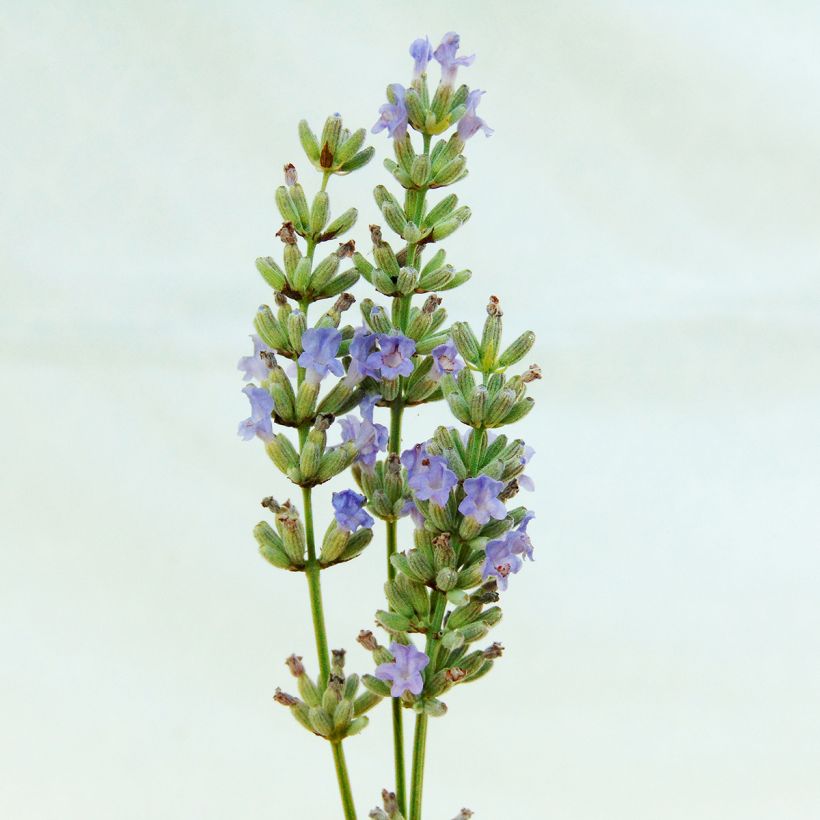

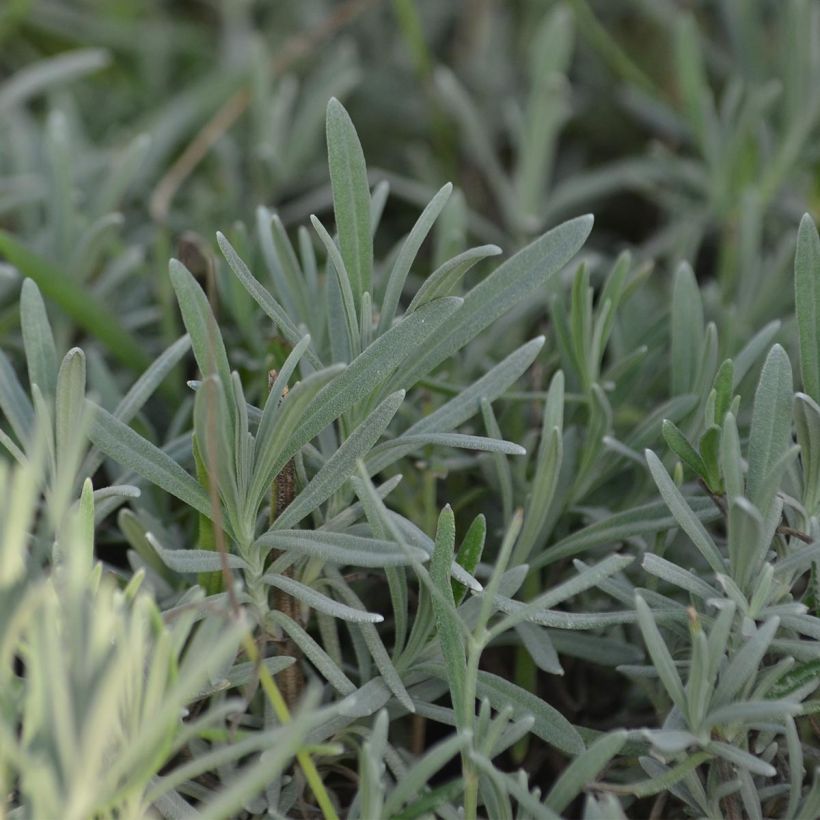

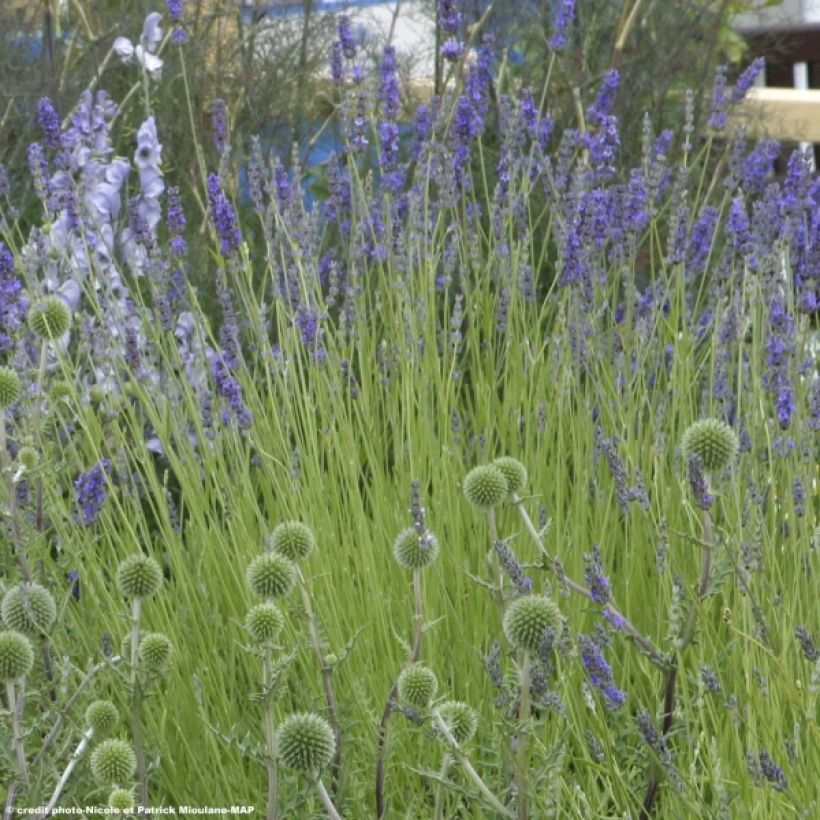

Flowering
Foliage
Plant habit
Botanical data
Lavandula
x intermedia
Grappenhall
Lamiaceae
Lavandin, Dutch Lavender
Cultivar or hybrid
Other Lavandin
Planting and care
In nature, lavenders always live in poor and stony, dry, perfectly drained environments, in full sun. These plants dislike summer rain, which makes them sick and causes them to disappear, as they are very sensitive to fungal diseases induced by the combination of heat and soil moisture. In winter, they require good drainage, and in summer, they need to be kept dry. Lavender will age better in poor soil, as its growth will be slower and it will have less tendency to become bare at the base. To limit this phenomenon, pruning should be carried out from a young age, after flowering or in autumn, just above the first buds that can be seen on the wood. Lavenders never regrow on old wood. The clump will thus branch out more and more, remaining compact, eventually forming beautiful round and dense cushions. When planting, provide them with what they like: gravel, stones, coarse sand, but definitely not potting soil, compost, or fertiliser!
Planting period
Intended location
Care
-
, onOrder confirmed
Reply from on Promesse de fleurs
Summer flowering perennials
Haven't found what you were looking for?
Hardiness is the lowest winter temperature a plant can endure without suffering serious damage or even dying. However, hardiness is affected by location (a sheltered area, such as a patio), protection (winter cover) and soil type (hardiness is improved by well-drained soil).

Photo Sharing Terms & Conditions
In order to encourage gardeners to interact and share their experiences, Promesse de fleurs offers various media enabling content to be uploaded onto its Site - in particular via the ‘Photo sharing’ module.
The User agrees to refrain from:
- Posting any content that is illegal, prejudicial, insulting, racist, inciteful to hatred, revisionist, contrary to public decency, that infringes on privacy or on the privacy rights of third parties, in particular the publicity rights of persons and goods, intellectual property rights, or the right to privacy.
- Submitting content on behalf of a third party;
- Impersonate the identity of a third party and/or publish any personal information about a third party;
In general, the User undertakes to refrain from any unethical behaviour.
All Content (in particular text, comments, files, images, photos, videos, creative works, etc.), which may be subject to property or intellectual property rights, image or other private rights, shall remain the property of the User, subject to the limited rights granted by the terms of the licence granted by Promesse de fleurs as stated below. Users are at liberty to publish or not to publish such Content on the Site, notably via the ‘Photo Sharing’ facility, and accept that this Content shall be made public and freely accessible, notably on the Internet.
Users further acknowledge, undertake to have ,and guarantee that they hold all necessary rights and permissions to publish such material on the Site, in particular with regard to the legislation in force pertaining to any privacy, property, intellectual property, image, or contractual rights, or rights of any other nature. By publishing such Content on the Site, Users acknowledge accepting full liability as publishers of the Content within the meaning of the law, and grant Promesse de fleurs, free of charge, an inclusive, worldwide licence for the said Content for the entire duration of its publication, including all reproduction, representation, up/downloading, displaying, performing, transmission, and storage rights.
Users also grant permission for their name to be linked to the Content and accept that this link may not always be made available.
By engaging in posting material, Users consent to their Content becoming automatically accessible on the Internet, in particular on other sites and/or blogs and/or web pages of the Promesse de fleurs site, including in particular social pages and the Promesse de fleurs catalogue.
Users may secure the removal of entrusted content free of charge by issuing a simple request via our contact form.
The flowering period indicated on our website applies to countries and regions located in USDA zone 8 (France, the United Kingdom, Ireland, the Netherlands, etc.)
It will vary according to where you live:
- In zones 9 to 10 (Italy, Spain, Greece, etc.), flowering will occur about 2 to 4 weeks earlier.
- In zones 6 to 7 (Germany, Poland, Slovenia, and lower mountainous regions), flowering will be delayed by 2 to 3 weeks.
- In zone 5 (Central Europe, Scandinavia), blooming will be delayed by 3 to 5 weeks.
In temperate climates, pruning of spring-flowering shrubs (forsythia, spireas, etc.) should be done just after flowering.
Pruning of summer-flowering shrubs (Indian Lilac, Perovskia, etc.) can be done in winter or spring.
In cold regions as well as with frost-sensitive plants, avoid pruning too early when severe frosts may still occur.
The planting period indicated on our website applies to countries and regions located in USDA zone 8 (France, United Kingdom, Ireland, Netherlands).
It will vary according to where you live:
- In Mediterranean zones (Marseille, Madrid, Milan, etc.), autumn and winter are the best planting periods.
- In continental zones (Strasbourg, Munich, Vienna, etc.), delay planting by 2 to 3 weeks in spring and bring it forward by 2 to 4 weeks in autumn.
- In mountainous regions (the Alps, Pyrenees, Carpathians, etc.), it is best to plant in late spring (May-June) or late summer (August-September).
The harvesting period indicated on our website applies to countries and regions in USDA zone 8 (France, England, Ireland, the Netherlands).
In colder areas (Scandinavia, Poland, Austria...) fruit and vegetable harvests are likely to be delayed by 3-4 weeks.
In warmer areas (Italy, Spain, Greece, etc.), harvesting will probably take place earlier, depending on weather conditions.
The sowing periods indicated on our website apply to countries and regions within USDA Zone 8 (France, UK, Ireland, Netherlands).
In colder areas (Scandinavia, Poland, Austria...), delay any outdoor sowing by 3-4 weeks, or sow under glass.
In warmer climes (Italy, Spain, Greece, etc.), bring outdoor sowing forward by a few weeks.
